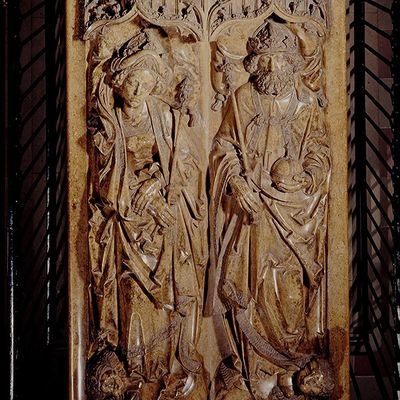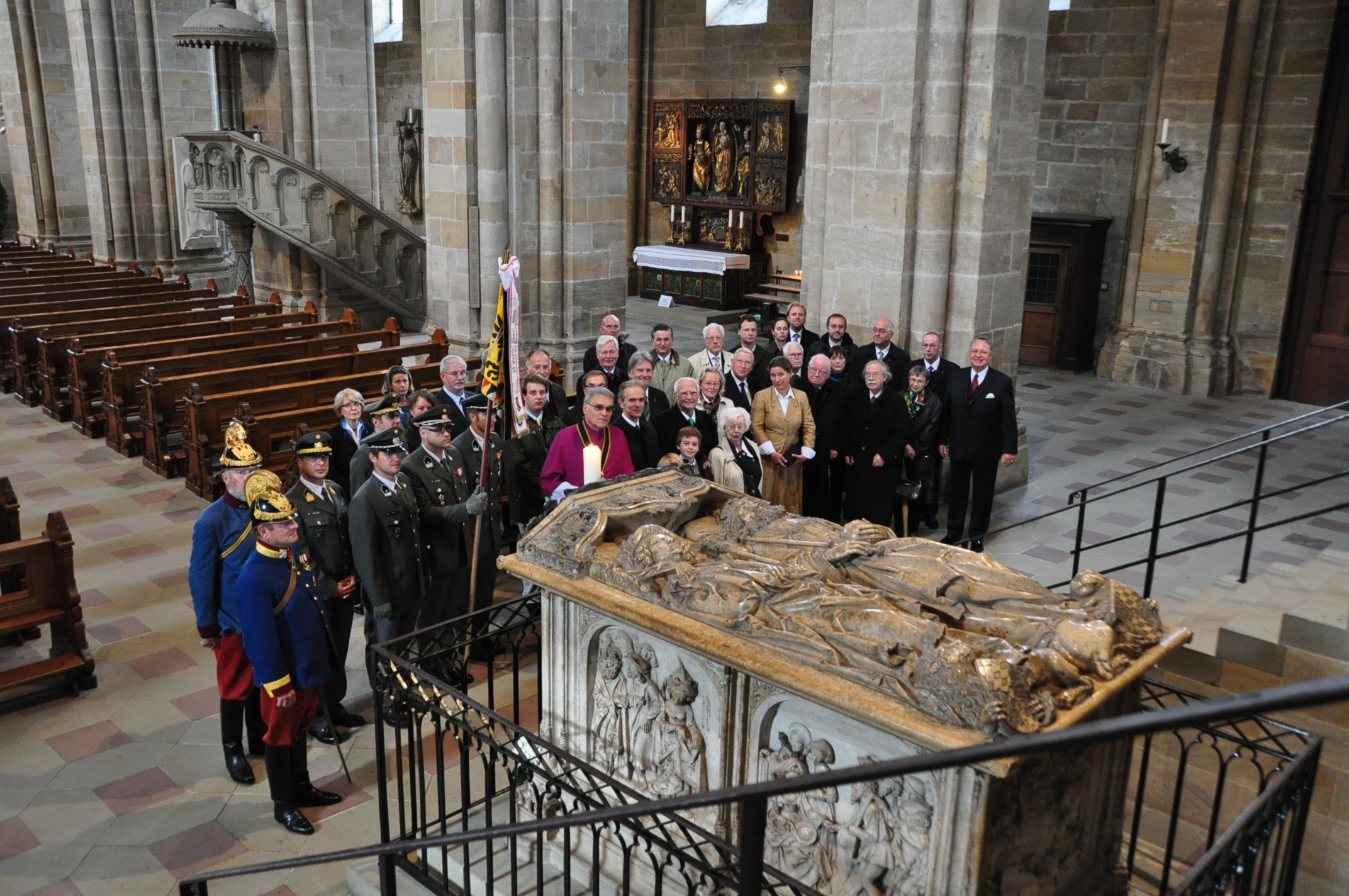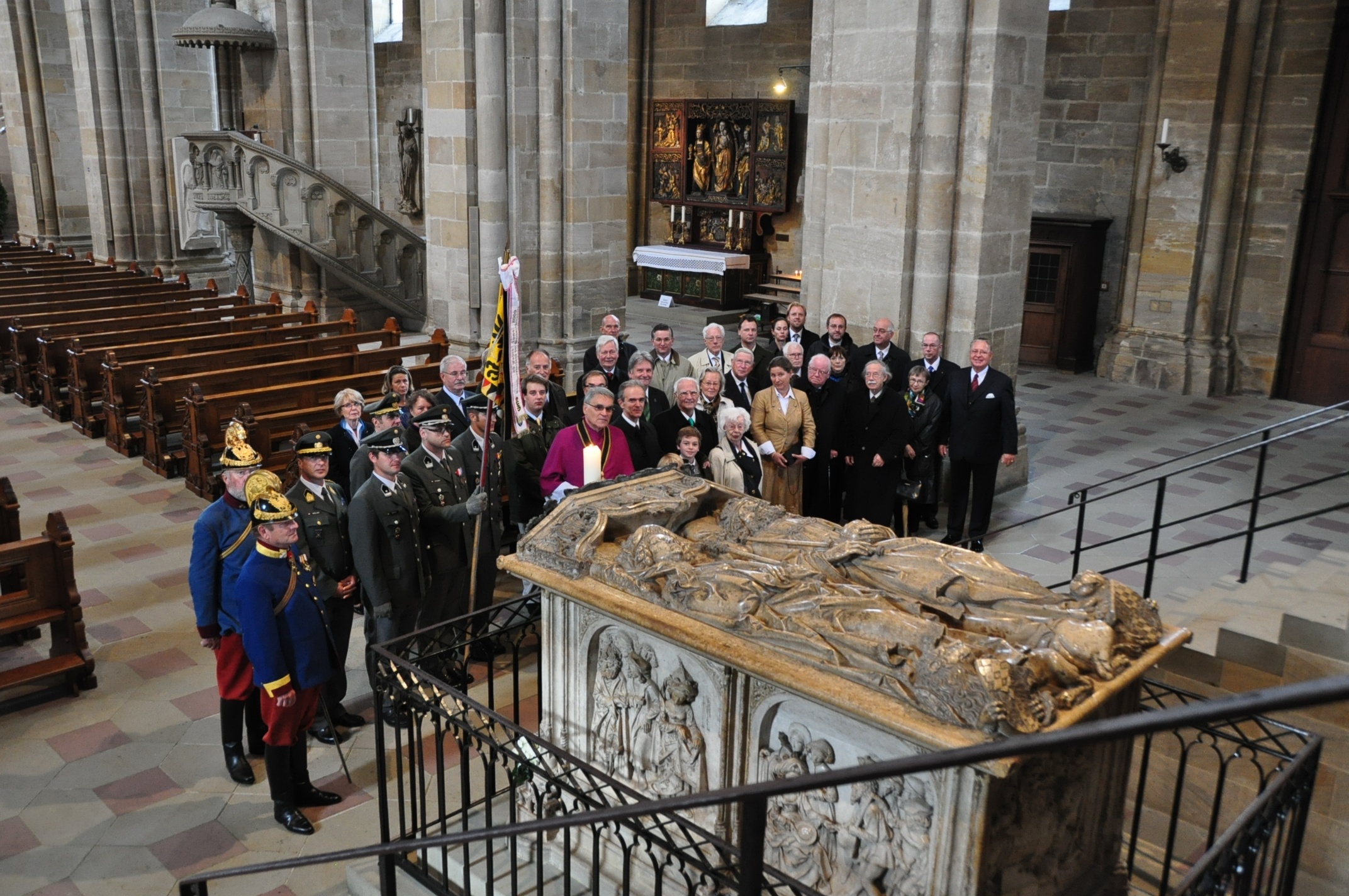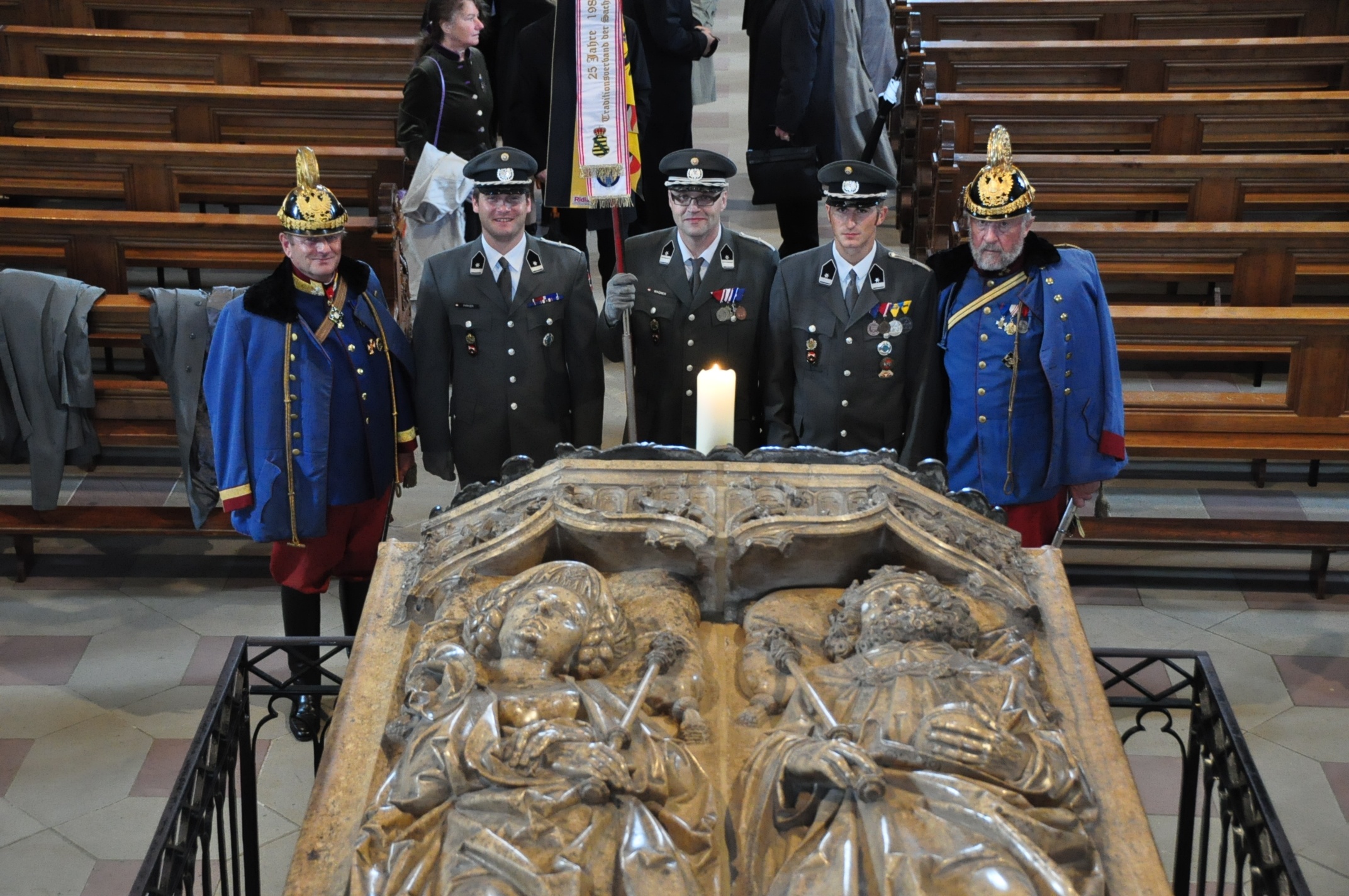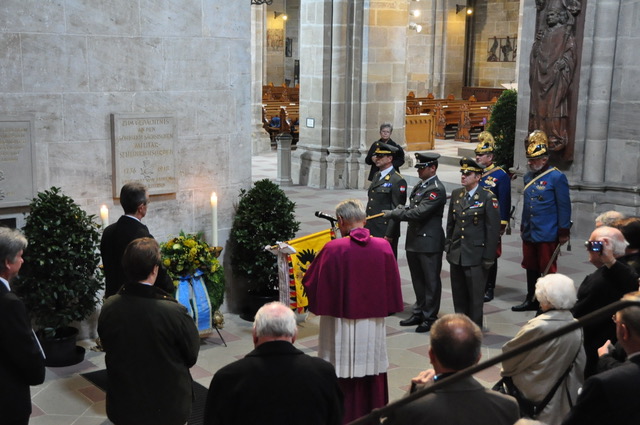Emperor Henry II.
Henry II was born into the Ottonian dynasty on 6 May 973. After his coronation as King of the East Franks in July 1002, Pope Benedict VIII anoints Henry II Holy Roman Emperor on 14 February 1014. Henry II Emperor of the Holy Roman Empire of the German Nation on 14 February 1014. He was married to Cunegonde of Luxembourg. The marriage remained childless, making Henry II the last emperor from the Ottonian dynasty. Henry II's death on 13 July 1024 marked the end of the Ottonian period on the throne of the Holy Roman Empire.
The life and work of Henry II (*973 - † 1024) is addressed and discussed in first-class specialist publications. Due to the complexity of the medieval sources, no additional interpretation will be provided here. Here are just a few key dates that outline the reign of Henry II.
The reign of Henry II is accompanied by various military conflicts. Henry II consolidates and stabilises his realm through closer ties to the Catholic Church and wages war against the Polish prince Boleslaw I Chrobry.
Henry II falls seriously ill while travelling to Magdeburg and dies in Grona near Göttingen in 1024; his grave is in Bamberg Cathedral. Henry II was canonised in 1146. The late Middle Ages emphasised his commitment to the spread and consolidation of Christianity in the context of his canonisation. Politically, Henry II endeavoured to "restore the Roman Empire" and founded the diocese of Bamberg in 1007. His commitment to the spread of Christianity and his closeness to the Roman Catholic Church were factors in the success of his reign. Henry II's empire encompassed significant parts of present-day Germany, France, Austria, the Netherlands and Belgium, Italy and parts of Croatia and can be understood as a European state, especially considering the very simple means of communication in the Middle Ages.
